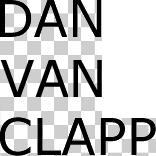
PORFOLIO
CV
STATEMENT
PRESS
CONTACT
In my childhood, I was fascinated by museum dioramas — their three-dimensional models in the foreground blending into
a two-dimensional background, creating an illusion of historical reality. In high school, I applied these ideas in making
miniature set designs that became models for our theatre sets. Ever since, I've continued to explore the ways in which
everyday found objects can be assembled into provocative tableaux that expose the hypocrisy in institutions designed to
protect us from ourselves — the church, the military, the government. This work questions the hagiography of war. From my days as an Army expert marksman in the 70s, I have been interested in the many ways human beings invent to kill themselves in order to promote peace and the many ways they invent to try to keep others from killing them. Before he died, my father, an aeronautical engineer who spent his life protecting us from the communists during the Cold War, pronounced his life's work "hogwash." In works such as Mega Ray and Cash for Trash, I probe the "hogwash" of our efforts to slay, or protect ourselves from, the latest dragon — the communists, the terrorists, whoever comes next. Although at first glance my art appears to be real — weapons, ships, planes, missile shields — closer inspection reveals that it is assembled from children's toys (Tonka truck wheels, whistles, tin horns), household objects (ice cube trays, hair curlers, jello molds), recycled material (aluminum cans, cardboard containers, plastic CD holders), and actual military junk from the aerospace industry. In Tank Boy, Boat Boy, and Jet Boy, for example, baby strollers provide the base for the work — a commentary on our sending ever younger children to fight our wars. Like Monty Python and Mash, my work is a satirical spoof of deadly serious themes — a fun house mirror reflecting the absurdity of our popular culture construction of war and patriotism. |